Leather products
Leather is the name of unprocessed hides of cattle and various wild animals used in the traditional system of ensuring the vital needs of Kazakhs. In the Kazakh nomadic economy, animal skins and wool fully satisfied basic household needs. In nomadic life, livestock products were used without waste. Since tanning is a technological process that requires great skill, in many cases it was done by professional craftsmen. Craftsmen, depending on the actions they perform, are classified as tanners, smokers, and dyers.
The researchers write that leather craftsmen had specialized professional titles depending on the type of raw materials they used or the type of leather they produced, for example, a person engaged in processing horse skins was called "opakshi", masters of processing shagreen leather were called "sagirshi", and those who processed Karakol leather were called "eat it."
Since the quality of leather products directly depends on the processing process, special attention is paid to the stage of tanning leather. If the skin does not undergo the kneading process, stretches incorrectly or the fat does not dry out enough, bleaching agents and paint will not be completely absorbed, and the skin surface will become prone to stretching and tarnishing. That is, the color of products made of unpeeled leather is uneven, the same can be seen on the surface of half-smoked leather products.
Improperly processed products wear out quickly, and water-soaked areas deform and discolor when drying.
The main purpose of tanning leather is to separate the skin from fat and protein, loosen the collagen layer, make it pliable, soft, lubricate, soften (harden) and give it the properties necessary for use. Such requirements include soft or hard leather, resistance to heat and cold, resistance to moisture, absence of rotting and cracking under the influence of bacteria.
Leather is one of the most important industries in the traditional system of ensuring the vital needs of Kazakhs.
Saba is a vessel for bottling koumiss, made by special processing of horse hide and painted from the outside. The processed leather is sewn from camel's hair. The lower part of the vessel is wide, and the upper part is reduced and long. The neck part has a strap for hanging the bowl. The upper part of the vessel is decorated with a wooden tip made in the form of a drop. The base of the vessel is made of wood. The outer part is entirely decorated with geometric patterns.
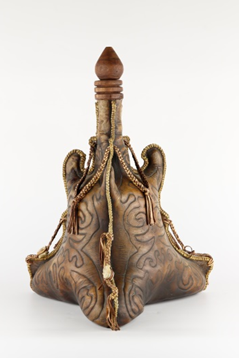
A sub. From the fund of the National Museum of the Republic of Kazakhstan.
Torsyk. A vessel for bottling koumiss, ayran and other beverages. Since the board is made in the shape of a ram's horn, it is classified as a "muiztorsyk". The lower part of the bowl is wide, the ends are rounded, the neck is in the middle, compact and long. There is a strap for hanging the vessel around the neck. Torsyk was in the saddle or on the shady side of the cart.
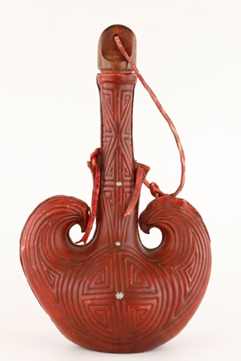
Torsyk. From the fund of the National Museum of the Republic of Kazakhstan.
Ayakkap ("a bag for utensils"). One part is hemispherical, the other is flat. On one side there is an elongated protruding part. A leather strap is sewn to the end of the protruding part. The outer side of the hemisphere is decorated with isosceles triangles, and the upper part has a fringe.
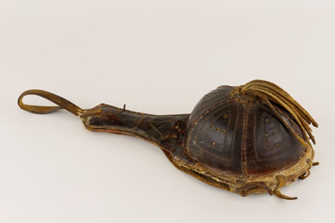
Ayakkap. From the fund of the National Museum of the Republic of Kazakhstan.
Capacity (container) for grain storage. Total capacity with two long necks. It is made in a zoomorphic style: on the sides there is an image in the form of a camel's head. The central part has a three-dimensional oval-shaped hole, the patterned part in the middle of the hole is connected using plates. The split neck fits snugly together.
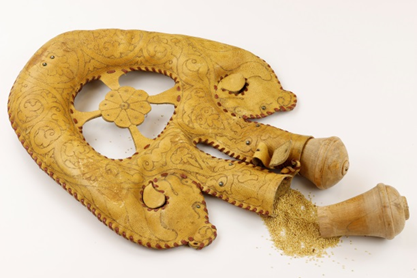
Capacity (container) for grain storage. From the fund of the National Museum of the Republic of Kazakhstan.
Tomaga, or "eyecup". The cap (that of the magician), which is put on by the hunter on the head of hunting birds, completely covers the eyes. This prevents premature attacks on prey and attempts to peck other birds. There is a hole for the bird's beak. The maga is made strictly according to the size for a particular bird.
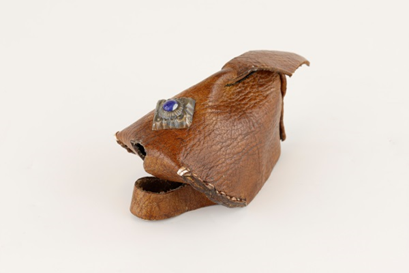
Tomaga. From the fund of the National Museum of the Republic of Kazakhstan.




